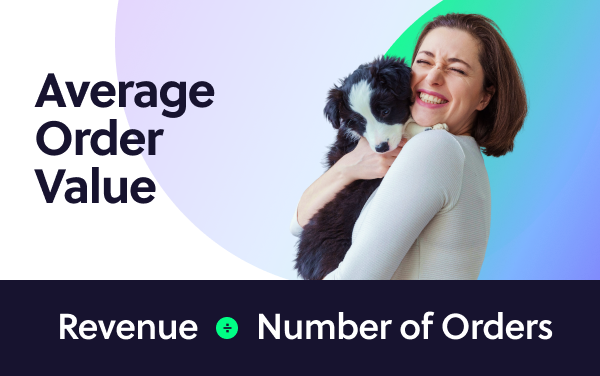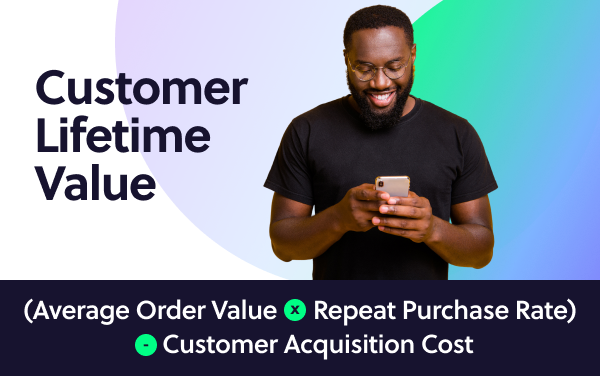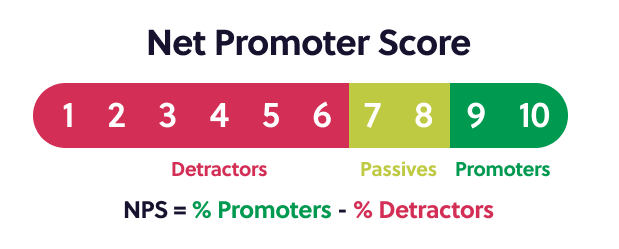Relationship Commerce
What is Relationship Commerce?

Today’s eCommerce landscape is saturated and merchants are struggling to differentiate themselves from their competitors. At the same time, consumer expectations are rising.
To compete, merchants must rethink how they interact with consumers. A transactional strategy is no longer good enough. Consumers not only want more value for their hard-earned dollars, but they also crave convenience and an exceptional customer experience.
Relationship Commerce is the key to differentiating your eCommerce business from your competitors while meeting consumer expectations.
This post will walk you through everything you need to know about Relationship Commerce, including what exactly it is, the strategy’s benefits, and elements of a successful program.
What is Relationship Commerce?
Relationship Commerce is a business philosophy aimed at developing deep and ongoing relationships with consumers. The ultimate goal is to move from one-and-done transactions to frictionless relationships, resulting in predictable, recurring revenue and higher customer lifetime value.
While Relationship Commerce includes a diverse mix of business strategies and capabilities, the starting point for many businesses is a subscription offering. However, a basic subscription offering doesn’t actively turn transactions into relationships. Relationship Commerce requires merchants offer an advanced subscription offering that gives subscribers complete control and rewards loyalty.
A subscription offering is the starting point for Relationship Commerce because it delivers convenience and cost savings to consumers, while also enabling merchants to collect customer data on an ongoing basis. Data collection is integral to Relationship Commerce, as it creates a virtuous cycle in which merchants can continually fine-tune their subscription offering to make it more valuable to their customers.
Other important aspects of Relationship Commerce include:
- Membership services
- Committed plans/contracts
- Clubs and boxes
- Event-based orders
- Instant, one-click orders
- Rewards and loyalty programs
- Predictive reordering
Benefits of Relationship Commerce
The benefits of Relationship Commerce to merchants are numerous. By becoming an indispensable part of their customers’ lives, merchants increase customer loyalty, lower churn, and, ultimately, drive higher lifetime value.
With Relationship Commerce, merchants can also offset their acquisition costs. According to ProfitWell, customer acquisition cost (CAC) is up an astronomical 60%. What’s more, it’s 5-25X more expensive to acquire a new customer than it is to retain an existing customer.
Merchants who utilize subscriptions as part of their Relationship Commerce strategy see additional benefits. Subscriptions increase predictability, help maintain positive cash flow, and generate great customer insights.
Learn more about the benefits of subscriptions in our blog post: Why eCommerce Subscriptions Are a Win-Win for Brands and Consumers.
Key elements of successful Relationship Commerce experiences
Now that you know what Relationship Commerce is and why it’s beneficial, it’s time to dive into the strategy’s most important elements.
Frictionless experience
A clunky website and excessive touchpoints drive consumers away. So does anything that adds friction to their buying journey. A key tenet of Relationship Commerce is recognizing that consumers want a hassle-free experience and giving it to them.
Shoppers should easily grasp the value of your product or service and be able to purchase it in as few clicks as possible. This holds true across devices, from laptops to smartphones.
For subscriptions, shoppers should also have complete control over their order. Subscribers should be able to update their billing information and change their delivery frequency. They should also be able to cancel their subscription without jumping through hoops.
Jamie Johns, Ordergroove’s strategic client director, said it best: “Ultimately, your goal is to have a frictionless, seamless experience, so the customer feels like they’re in control of their subscription, and not just handing their credit card over to a company.”
Examples of friction points to avoid:
- Poor website design
- Missing product information
- Hidden fees
- Sending shoppers to a separate website for checkout
- No easy way to opt-in to recurring orders
- Slow website load times
- Poor customer service
- Multi-page checkout
Convenience
Today’s consumers want meaningful experiences. They want to spend less time shopping and more time doing the things they love. Relationship Commerce recognizes this demand and focuses on giving shoppers back time and brain space.
Take subscriptions for example. When shoppers use subscriptions, they don’t have to remember to restock the items they love. It just happens in the background.
Subscriptions aren’t the only way to add convenience. Merchants can also offer free shipping and the ability for customers to buy online and pick up in store.
Cost savings
While a frictionless and convenient shopping experience goes a long way to meeting consumer demands, they also want value. Relationship Commerce rewards consumers with tangible benefits, most often through subscriptions.
Over the long term, subscriptions are less expensive than one-off purchases. It’s common for merchants to offer 10%, 15%, and even 20% off products through subscriptions. This is on top of other benefits like free shipping. Put another way, subscriptions add value — and consumers love value.
Subscriptions also continually re-enforcing a merchant’s relationship with their customers, showing them that they’re saving money.
Reward loyalty
As we noted above, adding value to your product or service is an essential part of Relationship Commerce. One way merchants can accomplish this is by rewarding customers for continuing to shop with their company. This will increase brand loyalty and positively impact your bottom line.
A tactic that we encourage our customers to adopt is sending subscribers a reward after a set number of orders. By doing this, our customers are providing their subscribers with more value, and in turn, building loyalty. Our data shows that rewarding subscribers increases retention by as much as 10%.
Personalization & predictive reorders
A successful Relationship Commerce strategy relies on both collecting and analyzing customer data. When this is done correctly, merchants can use customer insight data to provide a superior customer experience. This is primarily accomplished through product personalization and predictive reorders.
Personalization is a powerful tool that ensures your customers are matched with products that meet or exceed their expectations. The most popular form of personalization is a guided selling experience.
A guided selling experience replicates an in-store consultant, providing shoppers with a product based on their answers to a series of questions. For example, Yankee Candle uses a short quiz to discover which fragrances a shopper prefers and recommends products that align with their preferences.
Closely related to personalization is predictive reorders. Predictive reorders determine when a customer might need more or less of a product and prompts them to either order more or skip their next delivery. Predictive reorders use artificial intelligence to analyze customer data for trends.
How to measure Relationship Commerce
You can measure the effectiveness of your Relationship Commerce efforts through common eCommerce metrics. We’ve highlighted the most important metrics to track below.
Customer retention
Customer retention refers to a company’s ability to convert customers into repeat buyers. It’s also a way for companies to identify whether their product or service meets their customers’ needs.
Customer retention is measured with customer retention rate (CRR). Specifically, CRR is the percentage of customers a company has retained over a given period of time.
To calculate CCR, you’ll need to know the following:
- Number of existing customers at the start of the period (S)
- Number of total customers at the end of the period (E)
- Number of new customers added in the period (N)
Then use this formula:

Want to know more about customer retention? Check out this blog post: Why Customer Retention Should Be Your Main Priority.
Average over value
Average order value (AOV) tracks the average total of every order placed with a merchant over a given time period. AOV is a metric used to understand customer buying behaviors. Knowing your AOV helps you evaluate your marketing efforts and pricing strategy.
Use this formula:

For example, let’s assume your company’s sales in May were $22,000 and you had a total of 1,000 orders. Your AOV for May would be $22.
For AOV benchmark data in the subscription space, check out this infographic.
Customer lifetime value
Customer lifetime value (CLV) measures the revenue you can expect from a customer over the duration of their relationship with your business. In short, it’s the measurement of how valuable a customer is to your company.
CLV is important because it helps you determine how much money you should invest in acquiring and retaining customers. For instance, if you know a particular customer’s CLV is $500, you need to spend less than this amount to acquire and retain their business.
There are several ways to measure CLV, ranging from simple to complex. Here is a common formula:

Net promoter score
Net promoter score (NPS) is the gold standard of customer satisfaction data. It measures the willingness of a customer to recommend a company’s product or service to others.
NPS scores are generated with a single-question survey that asks customers how likely they are to recommend a product, service, or organization on a scale from 0 (not at all likely) to 10 (extremely likely).
Based on a customer’s response, they are categorized into one of 3 buckets:
- 0 – 6: Detractors
- 7 – 8: Passives
- 9 – 10: Promoters
Promoters are loyal and enthusiastic customers. Passives are satisfied customers. Detractors are unhappy customers who are unlikely to purchase from you again and might discourage others from using your product or service.
Your NPS score is the percentage of promoters minus the percentage of detractors.

Here’s an example: Assume you surveyed 1,000 customers. You learn that 20% of your customers are Detractors, 40% are Passives, and 40% are Promoters. With these numbers, your NPS score would be 20.
What is a good NPS score? That depends on your industry. That being said, you should aim for an NPS of 30 or above. Obviously, the closer you are to 100, the better.
Subscription performance
Because subscriptions are integral to Relationship Commerce, merchants should pay close attention to the health of their recurring revenue program. For subscriptions, we recommend merchants track subscriber enrollment, subscriber retention, and AOV. This will give you a better overall understanding of your subscription program than solely focusing on acquisition.
To learn how to optimize your subscription program, read our ebook: The Ultimate Guide to Optimizing Your Subscription Program.
Final thoughts
Consumer expectations are rapidly changing. To survive in today’s highly competitive eCommerce environment merchants must change how they interact with consumers. By adopting Relationship Commerce strategies like subscriptions, you can build long-term relationships that drive customer loyalty and increase customer lifetime value.
